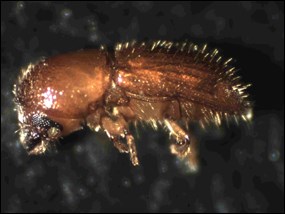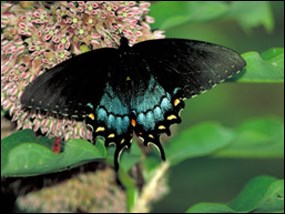|
It is well known that nonnative species invade natural habitats in Everglades National Park. Forests of exotic melaleuca trees threatening the world-famous sawgrass prairies and spectacular battles between Burmese pythons and alligators have launched the issue into the international spotlight. 
Photo courtesy Lyle Buss, University of Florida Insect invaders, on the other hand, often stage attacks on native plants and animals, but often go unnoticed. In some cases, these insect pests cause direct harm to the park's natural resources. For example, two scale insects, lobate lac scale and croton scale, were likely brought into Florida through the ornamental plant trade within the past 20 years. Following their introduction, these species spread into the park and now infest a wide range of native trees and shrubs in natural plant communities. Populations of native infested plants slowly decline and may even die as a result of these sap-sucking aliens. 
Photo courtesy Mike Thomas, Florida Department of Agriculture Other invasive species can have both direct and indirect effects on native plants and animals. The tiny red bay ambrosia beetle from Asia was first found in the United States in Savannah, Georgia, in 2002. This beetle is believed to have been accidentally imported in wooden shipping materials. By 2011, these mini invaders had made their way to Everglades National Park. Ambrosia beetles are peculiar in that they cultivate a fungus in tubes constructed under the bark of their host trees. The fungus serves as food for the adult beetles and their offspring. 
Photo courtesy Dan Culbert, University of Florida Unfortunately, the fungus is also deadly to a variety of trees, including the native swamp bay (Persea palustris). Swamp bay is an extremely common and important species that grows on tree islands throughout much of Everglades National Park. The inevitable loss of these trees will result in irreversible changes to the iconic Everglades landscape. 
Photo courtesy Dr. Thomas Barnes, USFWS In addition, swamp bay is also the main food plant for two native butterflies, the palamedes swallowtail (Pterourus (Papilio) palamedes) and spicebush swallowtail (Pterourus (Papilio troilus). Without swamp bay, these species will not be able to survive in the park. Once pest insect invasions occur in natural areas, they are nearly impossible to control. The best means of addressing the issue is to prevent introduction in the first place. |
Last updated: July 27, 2015
